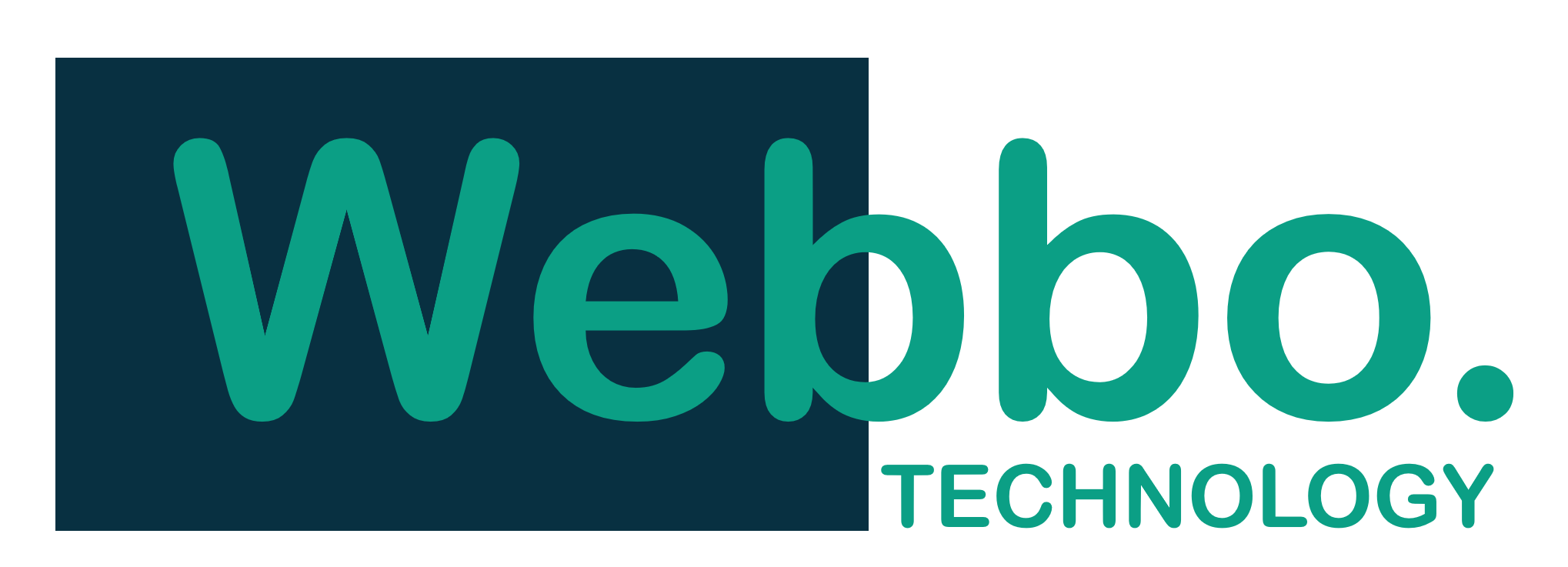ERPNext Frappe Framework
ERPNext is built on Frappe Framework,
a full-stack, batteries-included web framework written in Python and JavaScript.
Maintaining accurate financial records is crucial—not just for statutory compliance, but for a clear, real-time view of your organization’s financial health. With ERPNext, a fully open-source ERP software for accounting, you can streamline compliance, reduce manual spreadsheet efforts, and minimize reliance on external auditors. ERPNext transforms accounting by seamlessly integrating with inventory, manufacturing, HR, and more—turning your ERP into a centralized financial hub.
API-first, integrates with almost any app
In essence, Framework’s approach to APIs and integrations means you spend less time wrestling with connectivity issues and more time innovating. Your data, your apps, and your integrations all work together in harmony, with minimal fuss and maximum efficiency.
The extensibility and flexibility of ERPNext is unrivaled. Every custom field you create becomes instantly available as an API point in the powerful interface of the ERP software.
100% Mobile-friendly UX
All modules and all use cases can be managed from a tablet or a mobile phone. This is especially useful for your sales, CRM, maintenance, quality, retail, and HR use cases. This is also useful for on-the-go approvals and viewing real-time management dashboards.
Customizable beyond imagination, that too without writing much code
ERPNext is insanely customizable. Apps like Zoho, QuickBooks, and NetSuite have zero to minimal customizability, and other apps like SAP, Oracle, Odoo, and Salesforce make customizations expensive as you have to hire an expert to tweak, build, or change a small thing, making it lengthy and painful. When it comes to ERPNext, the app can bend to suit your needs.
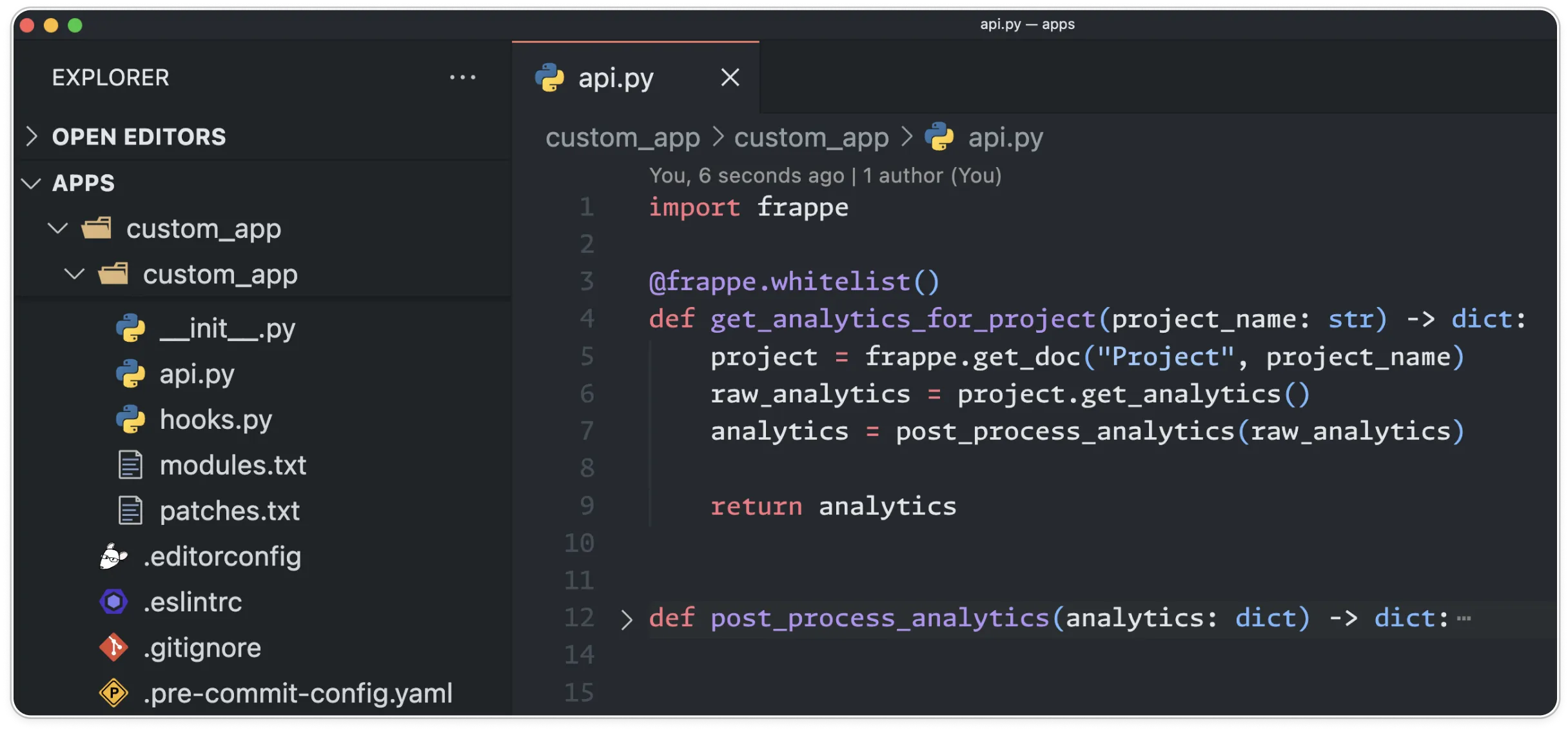
Customize Forms
Hide, add, modify, or calculate fields in any standard transaction (eg. sales invoice, sales order, item master, BOM), you can do so with just a few clicks and a sleek visual editor, without adding a single line of code.
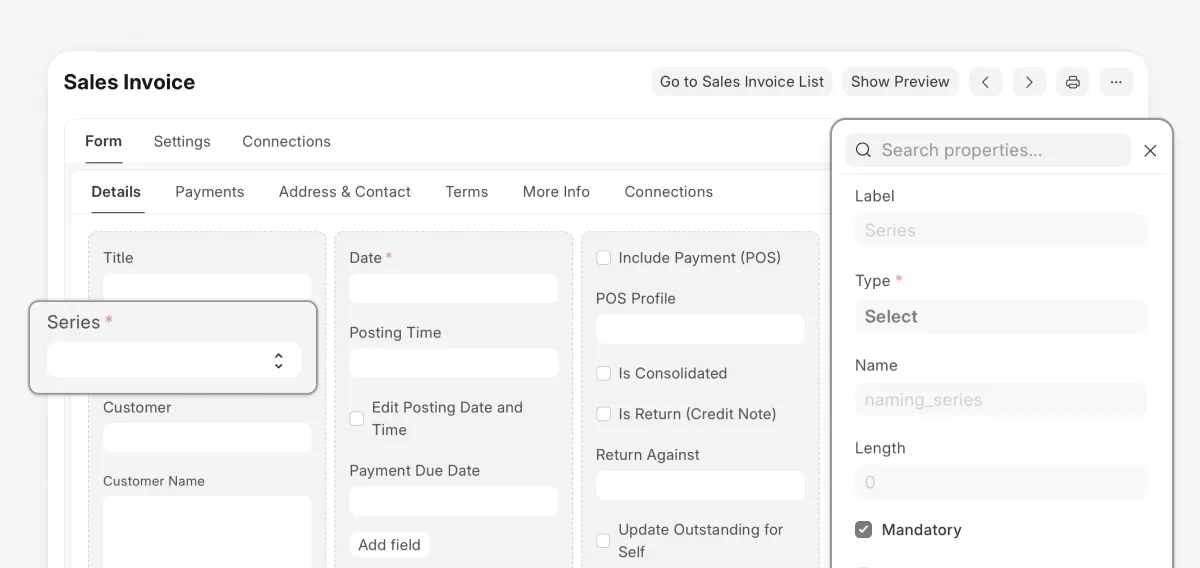
Custom Reports and Dashboards
Build custom reports and dashboards and save them for future reference.
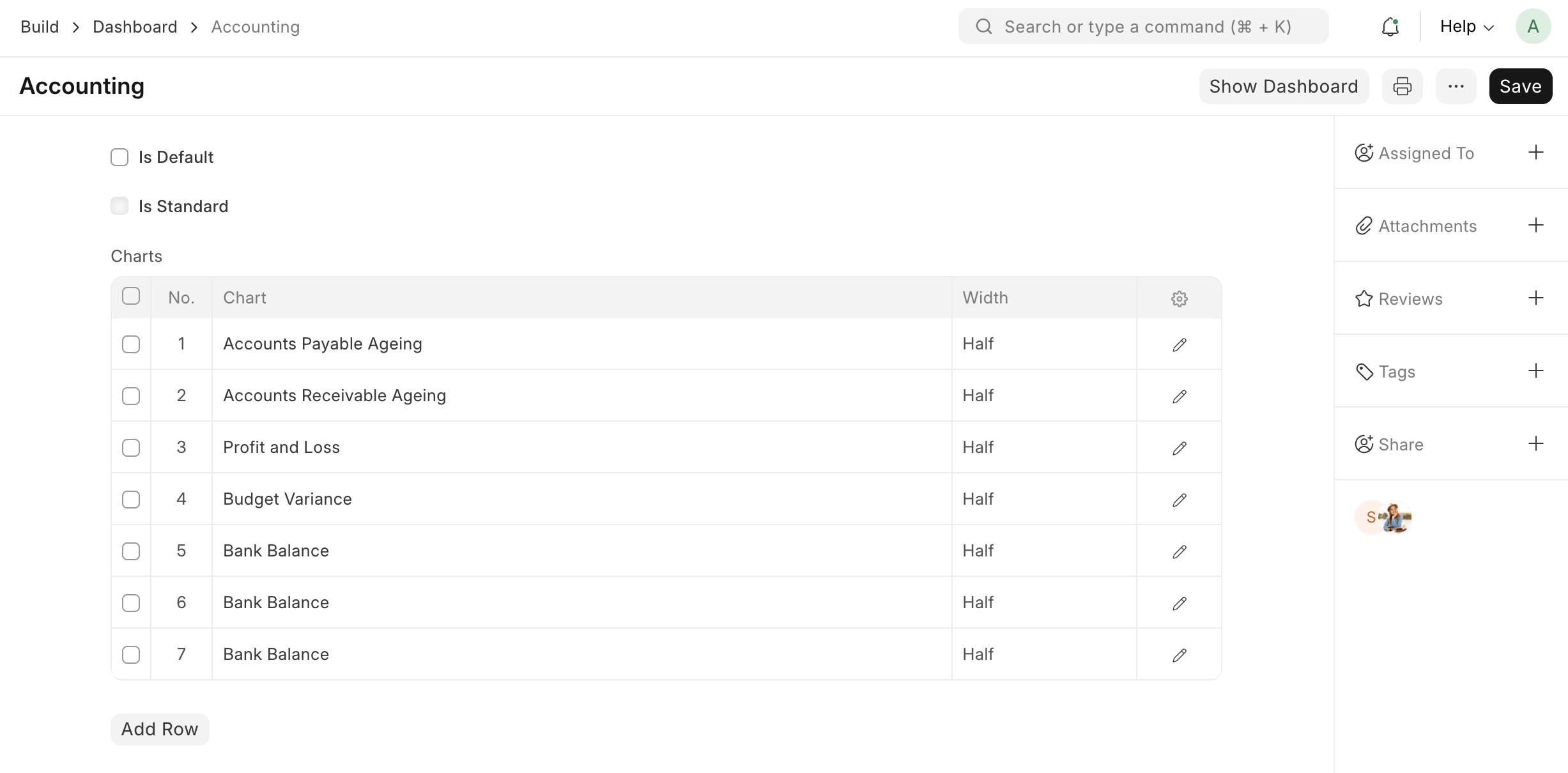
Print Format Builder
Make professional and beautiful print formats. Include logo, letterhead, terms & conditions, and anything you need on your item catalogs, sales quotations, invoices, offer letters, etc. .
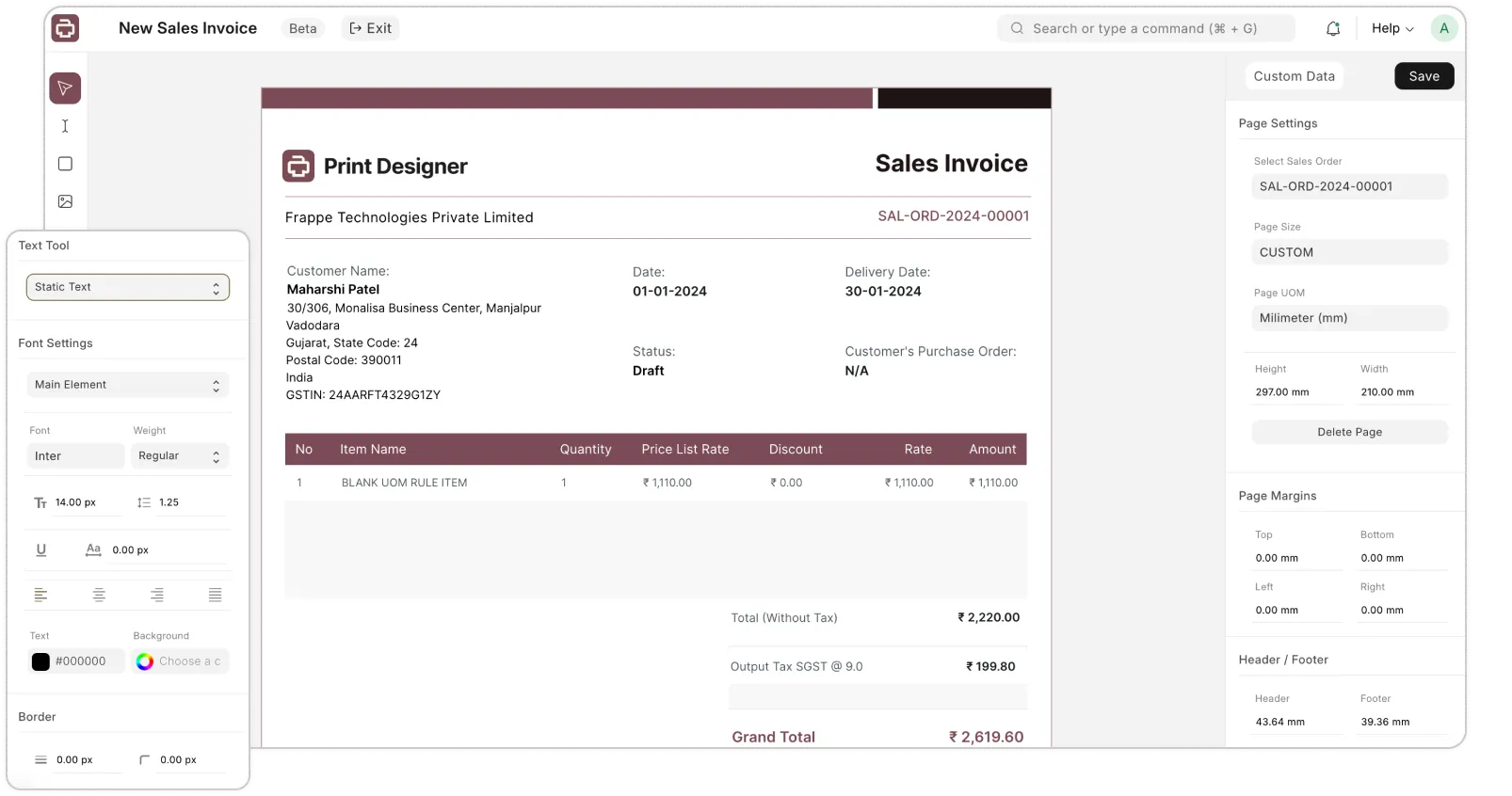
Customise Workspace
When you log into your Framework app, the first thing you see is the workspace. The default workspace helps you navigate your system, but you can customize it to organize and access your most-used DocTypes, reports, and key charts. This way, you can monitor everything that matters at a glance.
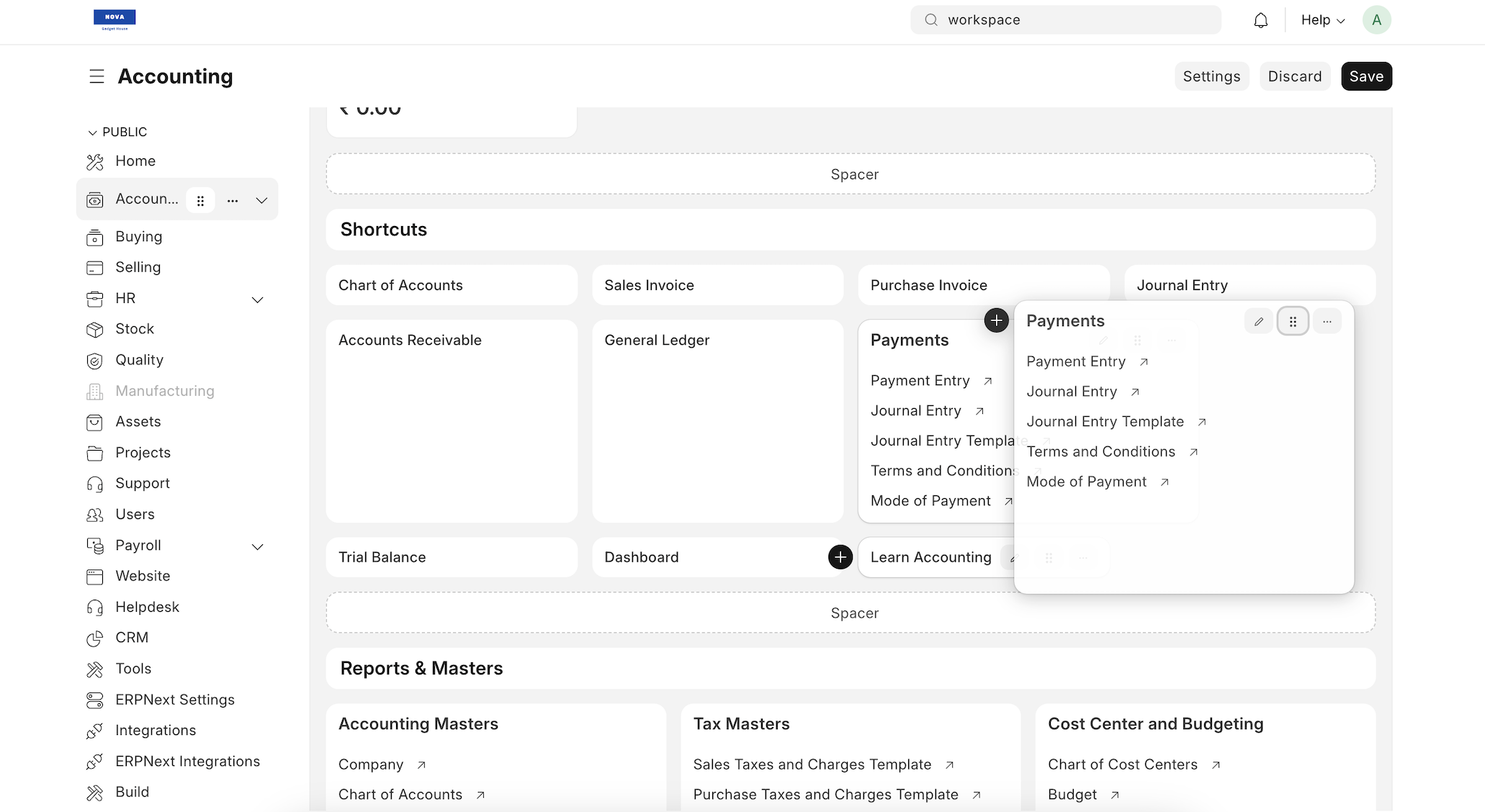
Notifications
Create in-app / email / whatsapp / slack notifications on the fly. So if you’re a CXO, get important reports mailed to you on a set frequency. Or if you’re an HR, set up an email notification when someone requests for a leave. If you’re a salesman set up a slack notification every time a new lead is created in the CRM. These are just a few examples. Use your imagination and set up notifications to save time and become more efficient.
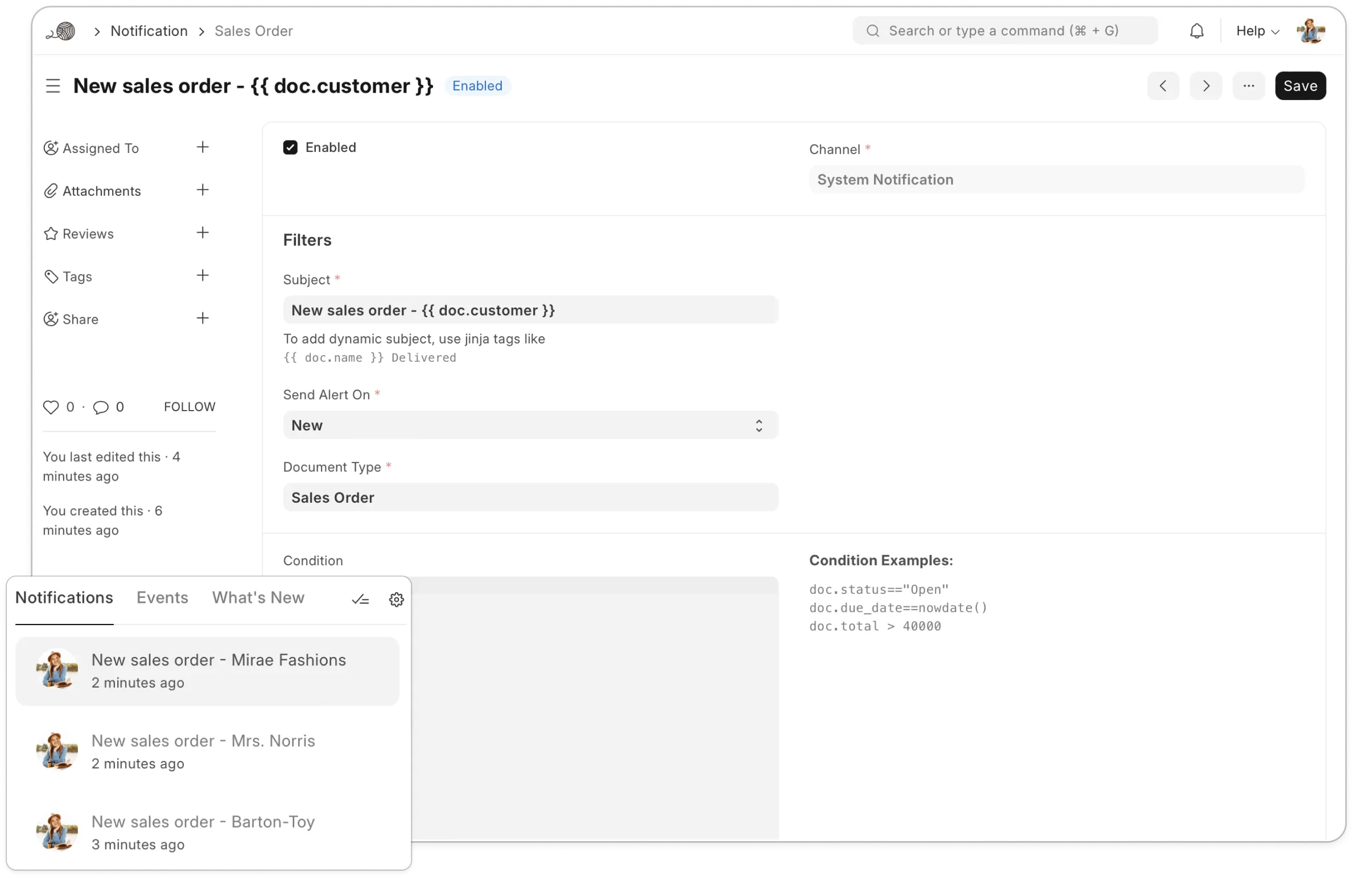
Approvals
Build conditional approval workflows on the fly. Create workflows based on amounts / cost-center / organization structure or any other condition. Create multi-level approvals for important workflows like payments.
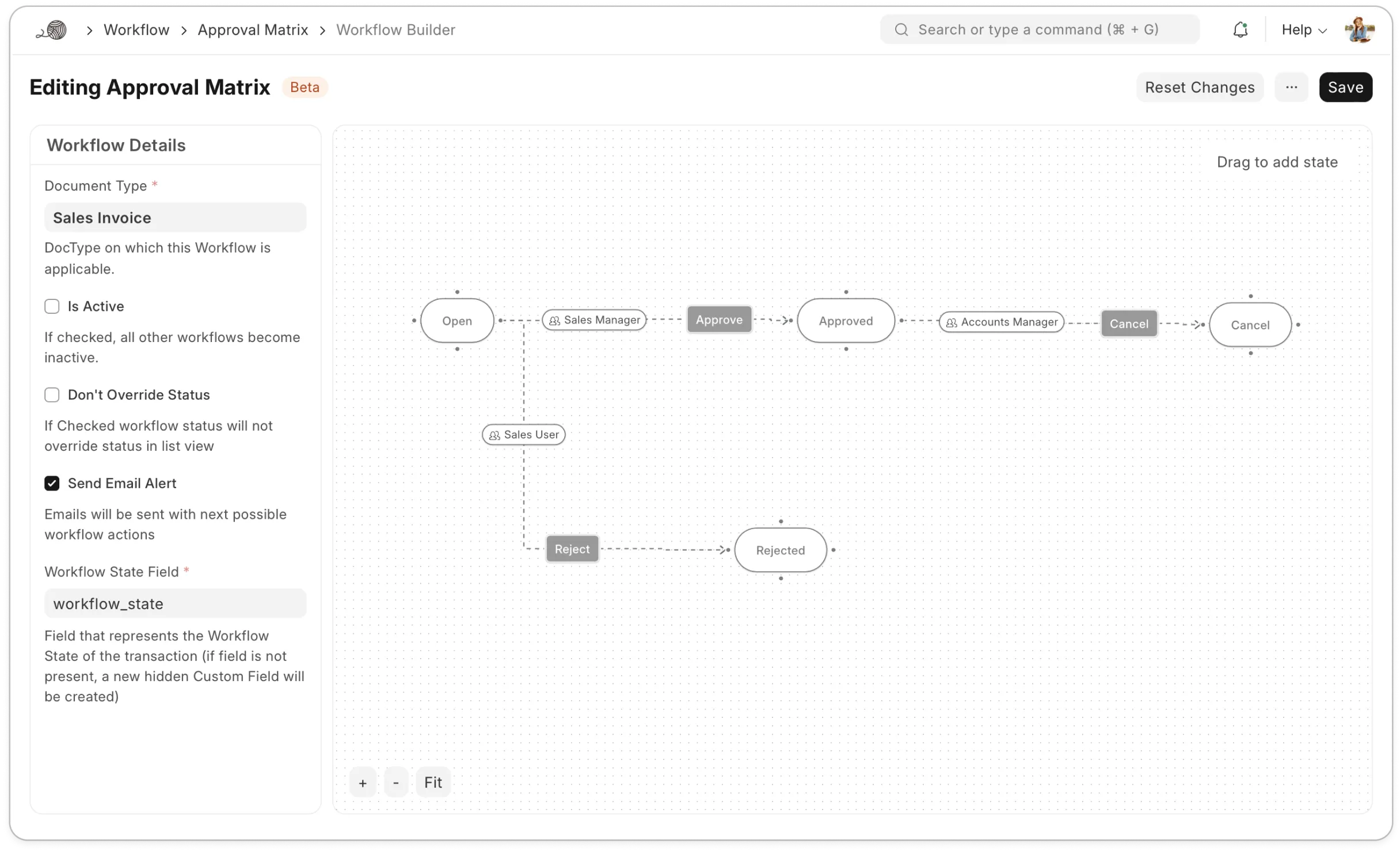
Centralised communication
Configure the default incoming and outgoing email account once and let ERPNext handle the rest. Once emails are configured you don’t have to go out of the system. All your communication with customers, suppliers, leads, and employees can be done to and from ERPNext and tracked centrally. This helps track all communication in one single place, and say goodbye to messy email shared email inbox.
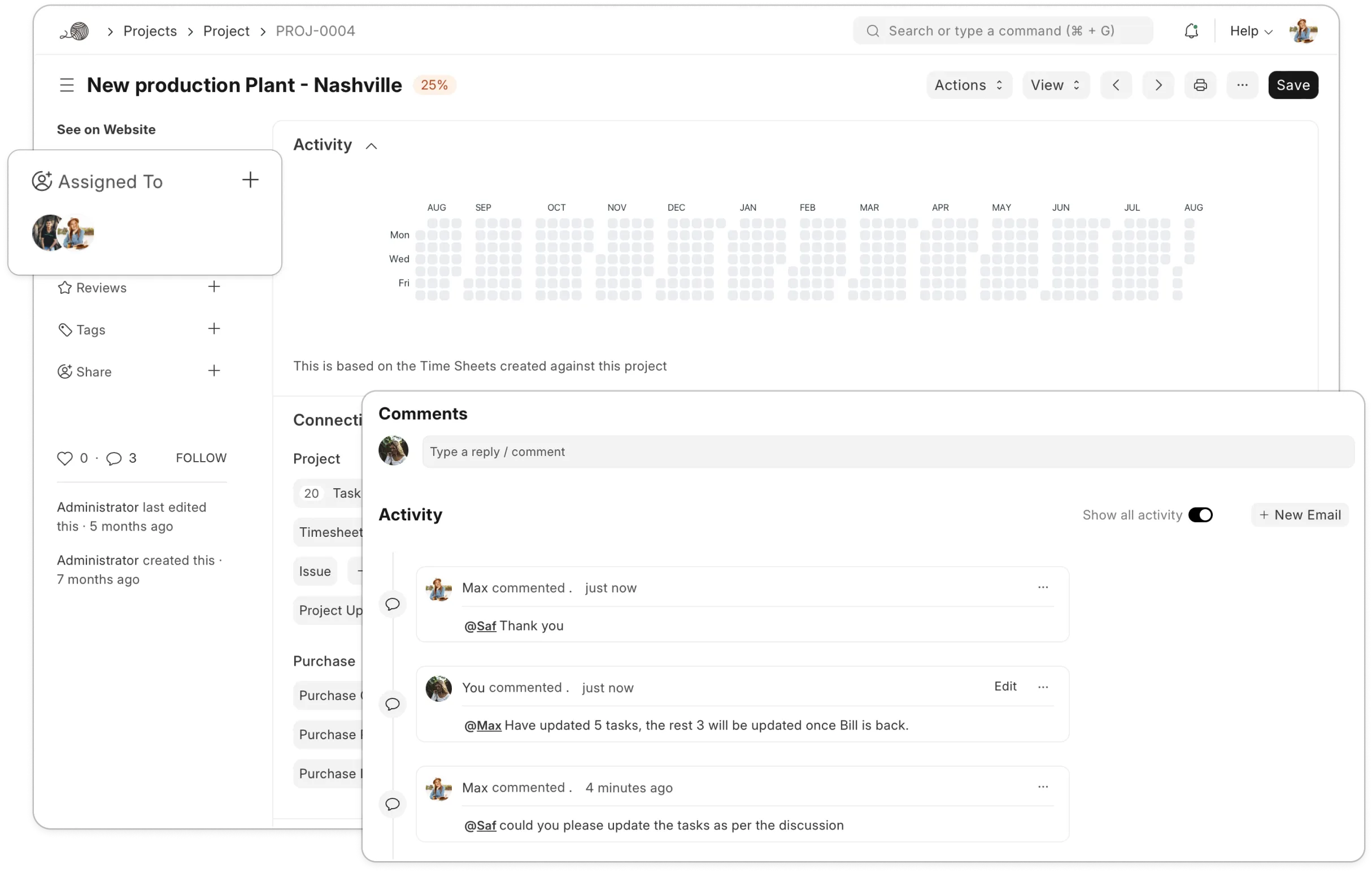
Enterprise-grade roles and permissions
In ERPNext, you can set granular roles and permissions on your own, that can go as granular as a doctype field.
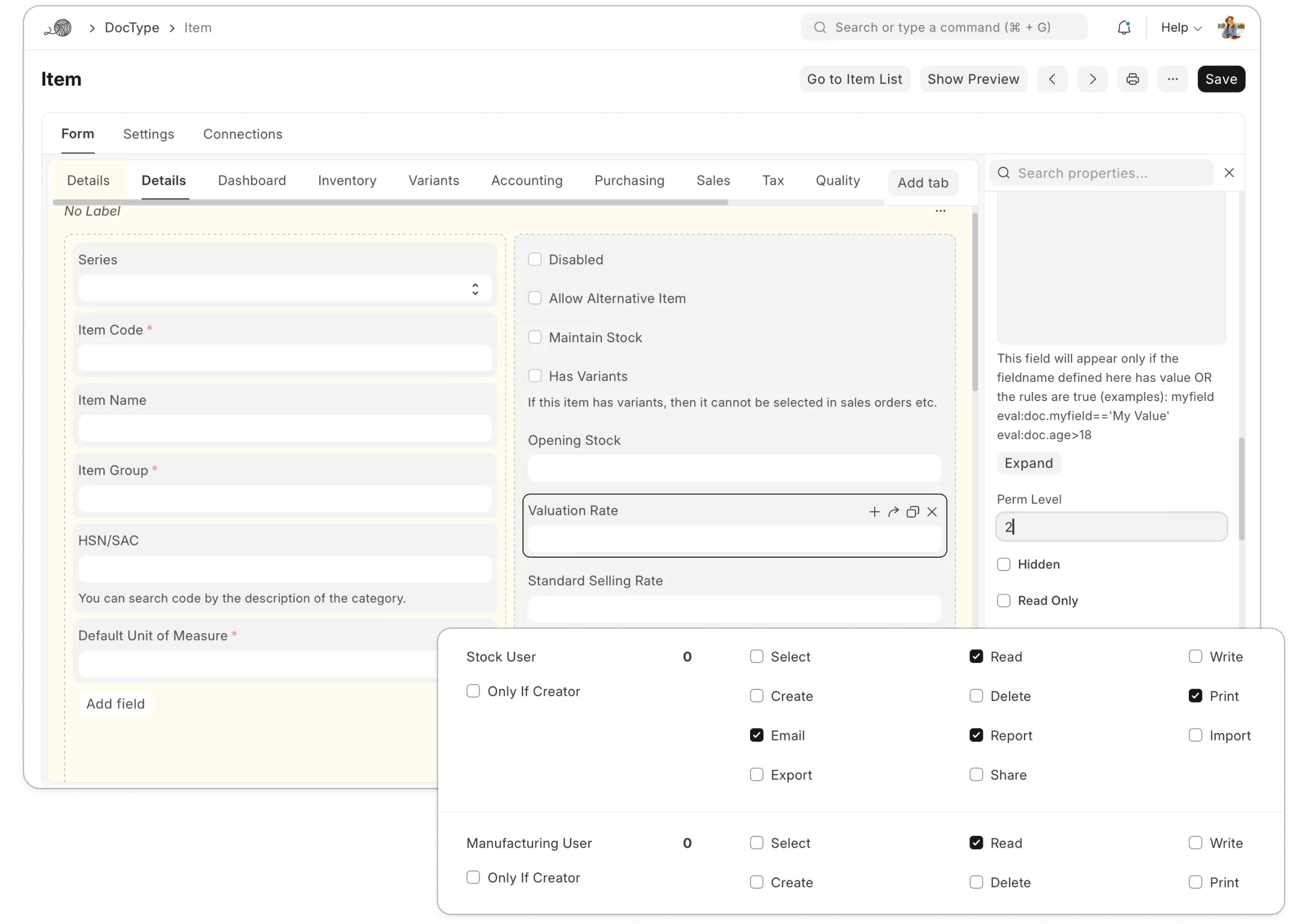
Tools that help rapid development
Web forms
Building forms from scratch? Isn’t it too time-consuming? With Frappe Framework's Form Builder, you can create and configure DocTypes with a simple drag-and-drop interface.
Client scripts
When out-of-the-box functionality just doesn’t cut it, custom scripts are your secret weapon. Use client scripts to add interactive features on the frontend and server scripts to handle backend logic.
Server scripts
In ERPNext, server scripts are Python scripts that run on the server when a document event or API occurs. You can use server scripts to dynamically define how data is handled.
Custom doctypes and apps
Custom scripts alone can't manage hooks or override Doctype classes and methods. That's where custom apps shine. For complex functionalities that server or client scripts can’t handle, creating custom apps is key.
No-code builder
Automate tasks with drag-and-drop simplicity
API-first
Easily integrate with third-party systems
Mobile-friendly
Manage all modules from any device
Customizable
Forms, reports, print formats, and dashboards
Approval workflows
Simplify with custom multi-level workflows
Roles & permissions
Granular access control to safeguard data
Framework saves ~95% of software development effort
The comprehensive, user-friendly and 100% open-source ERP
